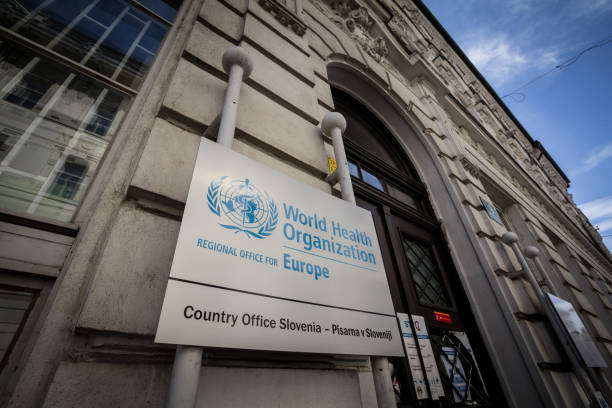The World Health Organization (WHO) is often at the forefront of global health discussions, but what is it exactly? How did it come into existence, what does it do, and why is it so important? In this article, we’ll explore all these facets to provide a comprehensive understanding of the World Health Organization.
The Origin of the World Health Organization
Imagine a world scarred by the catastrophic effects of World War II. It was during these challenging times that the realization dawned on the international community – a dire need for a global health organization that could foster cooperation among nations. Rising from these ashes of necessity, the World Health Organization (WHO) was established on April 7, 1948, under the umbrella of the United Nations (UN).
From then on, every year, this date is celebrated as World Health Day, a testament to the organization’s inception and its mission to foster health worldwide. The World Health Organization was not just created as a symbol or an aftermath response to the war. Its founding served a much bigger purpose – to nurture global health, safeguard the world from health threats, and assist the most vulnerable. From its inception, the World Health Organization was envisioned to be an organization that not just reacted to health crises, but also preemptively acted to promote health and prevent diseases worldwide.
So, with its roots embedded deep in the ruins of the war and its branches reaching out to health concerns globally, the World Health Organization came into being. It’s a fascinating story of unity amidst differences, of hope in the face of adversity, and of progress in the name of health. This story continues today, with the World Health Organization playing an indispensable role in shaping health landscapes around the world.
The Structure and Functions of the World Health Organization
Dive into the architectural blueprint of the World Health Organization, and you will find a unique structure that is as intriguing as it is effective. The WHO, essentially, is a tapestry of its Member States, intricately woven together into three main bodies – the World Health Assembly, the Executive Board, and the Secretariat.
Yearly, representatives from all member states converge under the umbrella of the World Health Assembly, making it a global health forum like no other. During this grand convention, the assembly reviews and amends the WHO’s policies, scrutinizes its financial policies, and gives the nod to the proposed program budget. In essence, the World Health Assembly is the decision-making furnace where global health policies are forged.
Next comes the Executive Board, the diligent implementer of decisions and policies set by the Assembly. Think of it as the stage crew that ensures the show goes on smoothly after the curtains have been drawn. The Executive Board ensures that every decision made at the Assembly is put into action, ensuring that the World Health Organization’s mission is more than just words on paper.
Then we have the Secretariat – the vital nerve center of the World Health Organization that keeps the organization’s daily functions running seamlessly. It’s the administrative powerhouse that ensures the WORLD HEALTH ORGANIZATION’S objectives are carried out day in and day out. The Secretariat is like the conductor of an orchestra, coordinating every element to create a symphony of global health initiatives.
In a nutshell, these three bodies function like well-oiled gears in the machinery of the WORLD HEALTH ORGANIZATION. Each body plays a distinct role, but they are all interconnected, working harmoniously to ensure the WHO can fulfill its noble mission – to promote health, keep the world safe, and serve the most vulnerable across the globe. The structure of the WORLD HEALTH ORGANIZATION is indeed a testament to the beauty of collaborative action in the face of global health challenges.
The Role of the WHO in Disease Control and Prevention
Safeguarding the world from the threat of diseases is at the heart of the WHO’s mission. This mission takes shape through a combination of ongoing vigilance, preparation, prompt response, and strategic intervention. The WORLD HEALTH ORGANIZATION works like a global health radar, continuously scanning the health landscape for potential health threats and disease outbreaks. This vigilant surveillance is crucial in detecting new diseases and identifying their patterns.
Equally important is the WORLD HEALTH ORGANIZATION’S role in strengthening the preparedness of countries to deal with potential outbreaks. The organization provides technical support, guidance, and resources to help countries gear up their health systems to deal with such scenarios effectively. The need for such preparedness was never more evident than during the COVID-19 pandemic.
When disease outbreaks occur, the WORLD HEALTH ORGANIZATION jumps into action mode, coordinating a global response to tackle the health emergency. This includes facilitating collaboration among nations, mobilizing resources, coordinating research, and ensuring that critical information reaches those in need.
Lastly, the WORLD HEALTH ORGANIZATION’S strategic intervention can also take the form of disease eradication campaigns. An example of this is the successful smallpox eradication campaign in the 1980s, a landmark achievement in global health.
In essence, the role of the WHO in disease control and prevention is multifaceted and dynamic. It’s like a guardian watching over the world, ready to detect, prepare, respond, and intervene, all in the quest to shield the globe from the ravages of diseases.
Notable Contributions and Achievements of the WHO
Delving into the World Health Organization’s hall of achievements, we are met with an impressive array of significant milestones that have marked its journey so far. Leading the pack is one triumph that reverberates through the annals of global health history – the eradication of smallpox in 1980. With this monumental feat, the WHO managed to wipe out a disease that had been a grim reaper of lives for centuries, writing a success story of unparalleled scale in global health.
However, the WHO’s victory march doesn’t stop there. The organization has been instrumental in battling several other health adversaries. The WHO’s intensive vaccination campaigns have resulted in a dramatic decline in polio cases worldwide. The battle against measles too has seen major victories, with a significant drop in cases globally, thanks to the WHO’s relentless efforts. Malaria, a persistent health menace in many parts of the world, has also been pushed back, with the WHO’s strategies leading to a notable reduction in cases.
The 21st century brought forth a new set of challenges, and the WHO was quick to respond. When Ebola threatened to destabilize health landscapes, the WHO leaped into action, playing a crucial role in the development of an Ebola vaccine. This proactive stance against emerging health threats showcased the WHO’s commitment to adapting and responding to evolving global health challenges.
Another feather in the WHO’s cap was the implementation of the Framework Convention on Tobacco Control. This comprehensive treaty, aimed at reducing tobacco use, showcased the WHO’s commitment to tackling health issues at their root.
Each of these achievements is not just a milestone for the WHO, but a landmark in global health. Each victory not only stands as a testament to the WHO’s commitment to health but also paves the way for future endeavors. Through these achievements, the WHO continues to write a story of perseverance, commitment, and success in the face of global health challenges. It’s a story that serves as a beacon of hope for a healthier world, underscoring the power of global cooperation and collective action.
Criticisms and Controversies Related to the WHO
As with any global institution, the WHO has seen its fair share of criticism and controversy. One of the most glaring instances of this was the handling of the HIV/AIDS crisis in the early 2000s. Critics contend that the organization was slow to respond and did not take the necessary steps to control the epidemic effectively. Similar criticism was directed at the WHO during the H1N1 influenza pandemic in 2009, with many believing that their response was inadequate given the global reach of the virus.
In recent times, the WHO’s handling of the COVID-19 pandemic has drawn both praise and criticism. While it was commended for its efforts in coordinating a global response, there were also allegations of a lack of transparency. Some critics argued that the WHO was slow to declare a global pandemic and faced questions about its interactions with China in the early stages of the outbreak.
But it’s not just about managing crises. The WHO has also faced questions over issues such as its budget allocation, decision-making processes, and prioritization of health issues. Despite these challenges, it is essential to remember that criticisms and controversies are often a part of any organization’s journey, particularly those with a mandate as wide and critical as the WHO’s. These instances should serve as opportunities for learning, growth, and improvement in the pursuit of global health.
The WHO’s Importance in the Contemporary Global Health Landscape
In today’s world, where health threats no longer respect borders, the World Health Organization (WHO) stands tall as an indispensable player. The global community is continually faced with the realities of infectious diseases, health disparities, and the health impacts of climate change. Navigating these choppy waters requires a stalwart guide, and this is where the WHO comes into its own.
The organization has proven itself as a beacon of guidance during health crises, steering the ship during turbulent times. From disease detection to coordinating global responses, the WHO’s role is akin to the captain of a ship, ensuring safe passage through health emergencies.
However, it’s not all about crises. The organization is equally engaged in steady-state health promotion. Its mission extends to dismantling health inequities and promoting accessible healthcare for all. It’s like a diligent gardener, continuously sowing seeds for a healthier world and pruning out the weeds of disparity.
Let’s not forget the mammoth challenge posed by climate change. As our planet warms, so does the complexity of health challenges. Rising temperatures herald the risk of heat-related illnesses and vector-borne diseases, among others. The WHO is actively working towards mitigating these risks, preparing nations to brace the wave of climate change-related health impacts.
In essence, the WHO’s role in today’s global health scenario is more than just an organization; it’s a compass, a lifeline, a beacon, and a gardener. It’s a multifaceted force that strives to usher in a healthier world against all odds. It underscores the value of unity and cooperation, reminding us that health is not an individual concern but a collective responsibility. It’s not just about keeping us safe today, but about ensuring a healthier tomorrow. Such is the invaluable role of the World Health Organization in our contemporary global health landscape.





you are in reality a just right webmaster The site loading velocity is incredible It seems that you are doing any unique trick In addition The contents are masterwork you have performed a wonderful task on this topic
Get a free video for your website to boost your reputation on social media. Your 5 star reviews become SEO videos that come up when someone Googles your reputation. Claim your free video here: http://freerepvids-learnmore.info